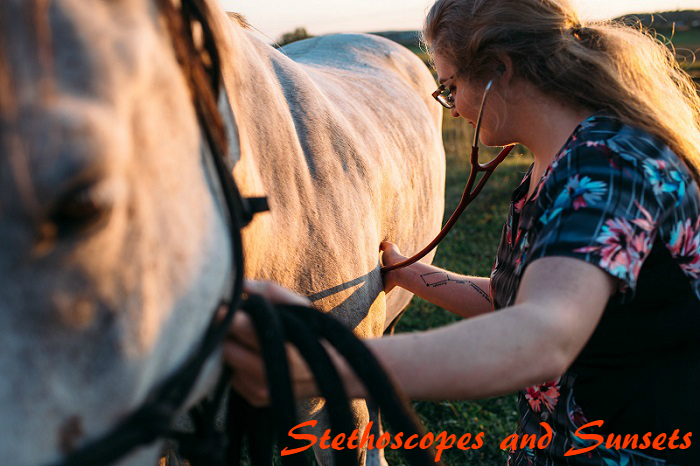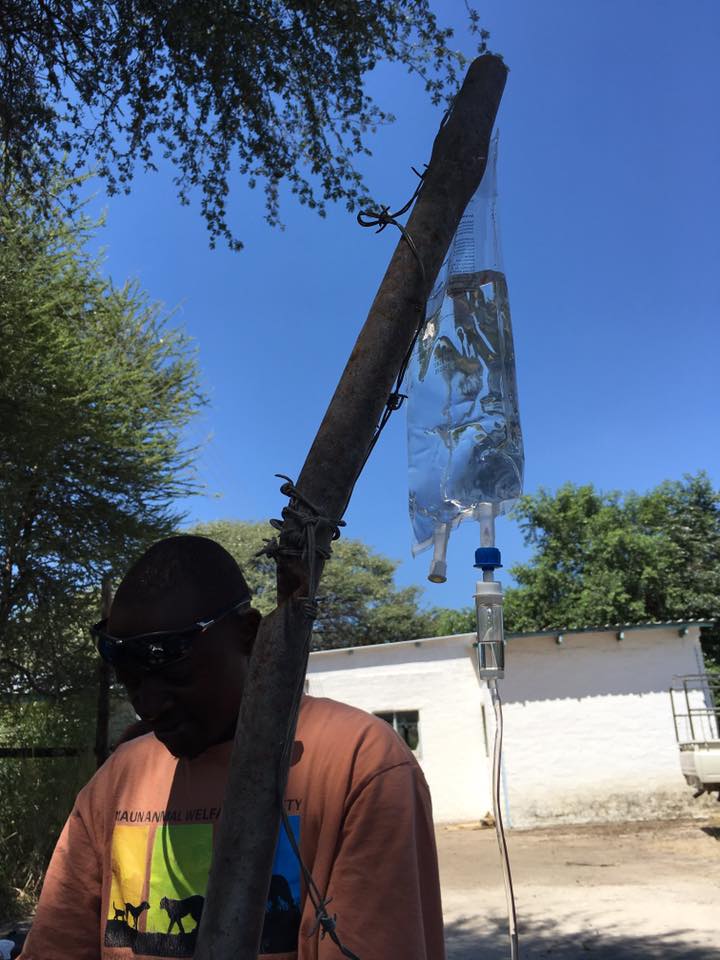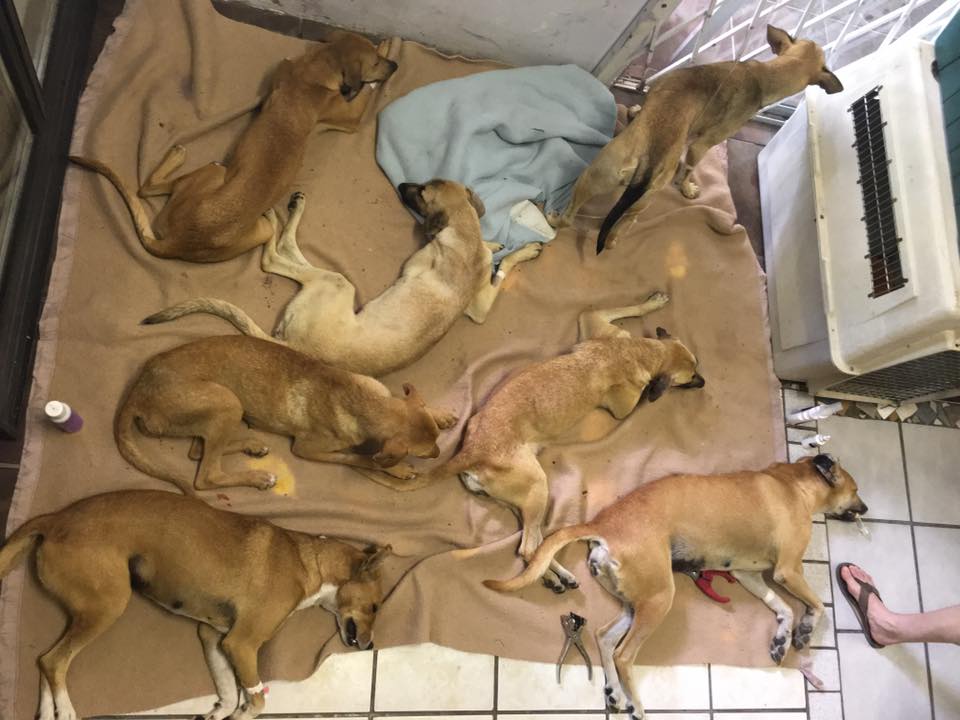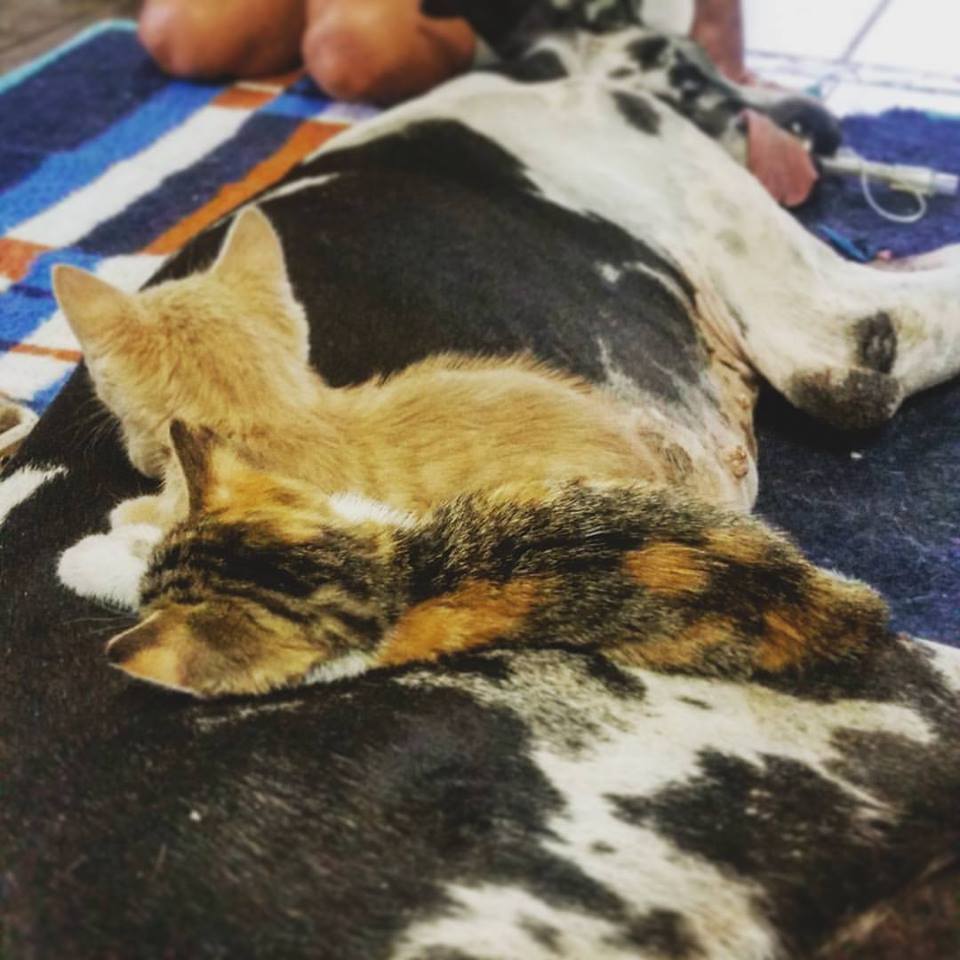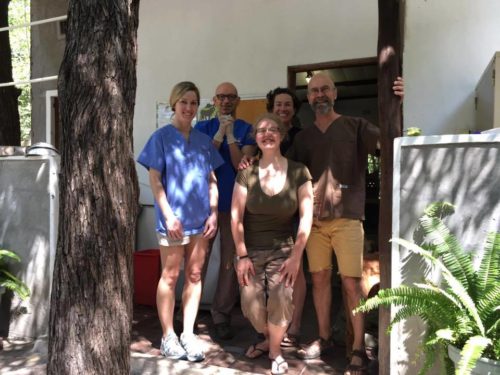
[The one and only group photograph of Team Rainbow Awesome in its entirety.]
Yes, that’s right — back to Botswana. Will I ever really leave? One of my veterinarians there has returned already, this time with the wife in tow, and reading about their adventures has left me almost painfully nostalgic for my time there. I started the trip with two vets and ended the trip with two different ones, but those couple of days in between when I had all four were something in-between exhausting and magical. I still miss this team and the wild, crazy, incredible surgery days we had together. I was so lucky to work with such talented vets. Despite all my attempts at group photos, we only managed to take a single one mere minutes before the first of us abandoned the group in order to go run a half-marathon (who does that, right?) but the day leading up to the photo will always stick with me.
